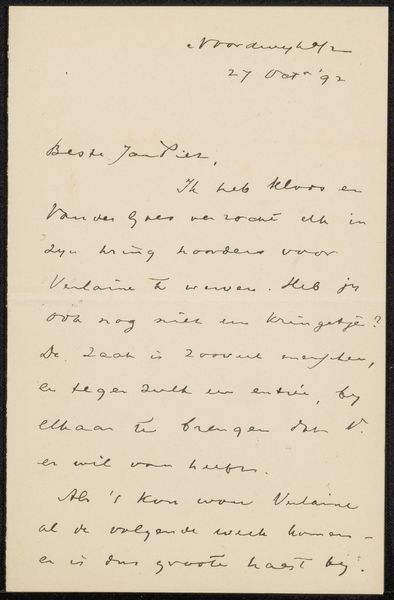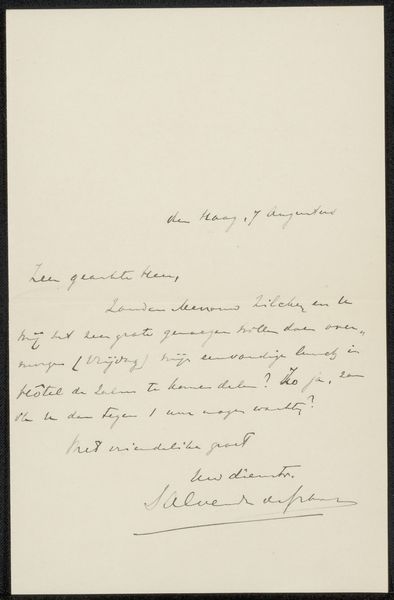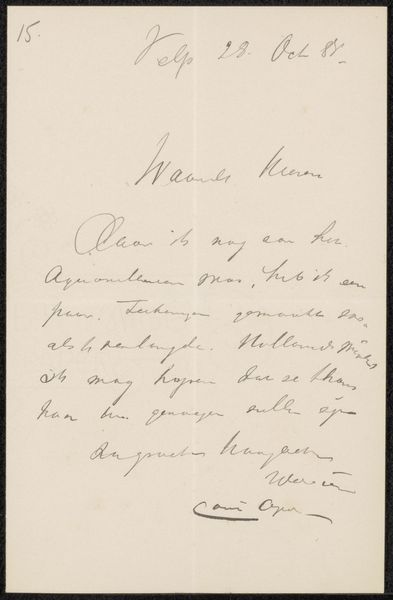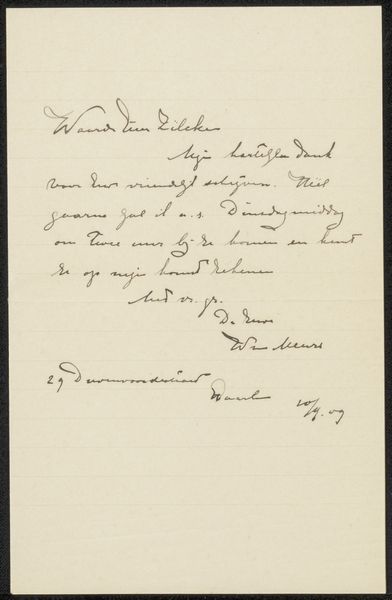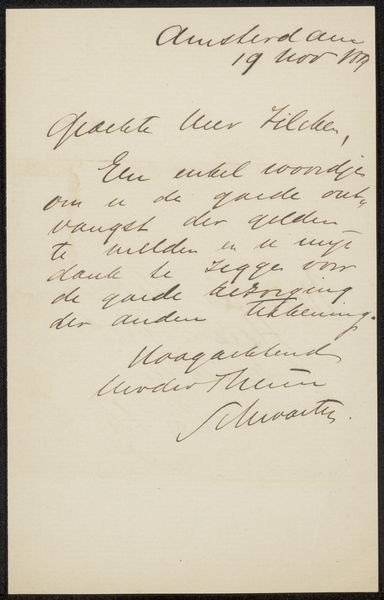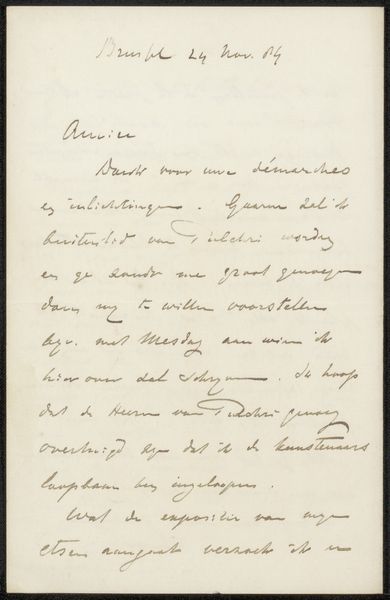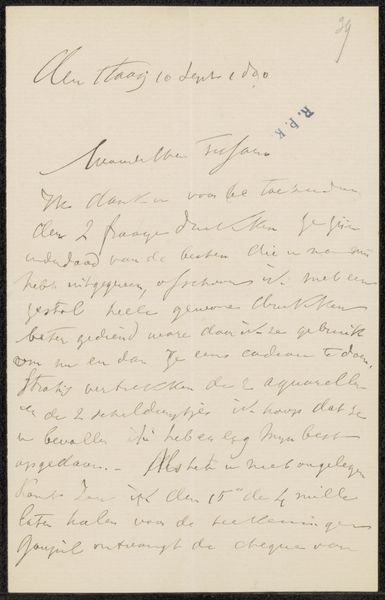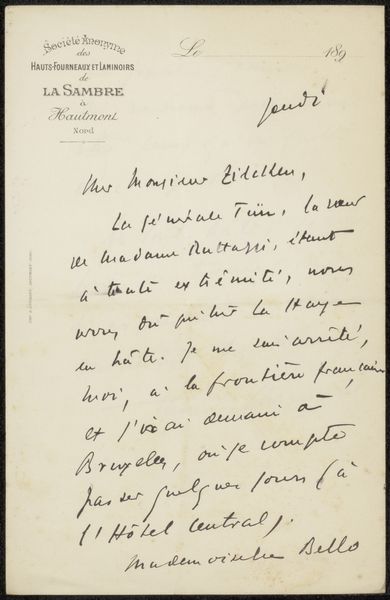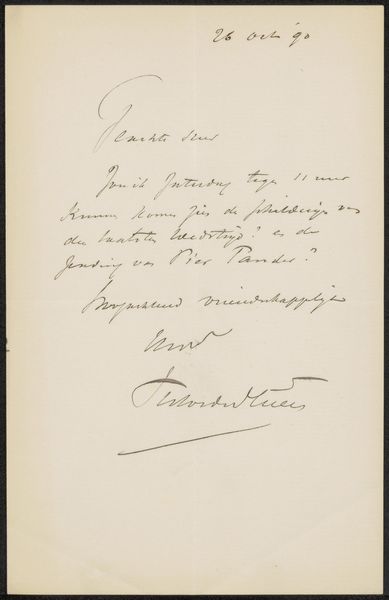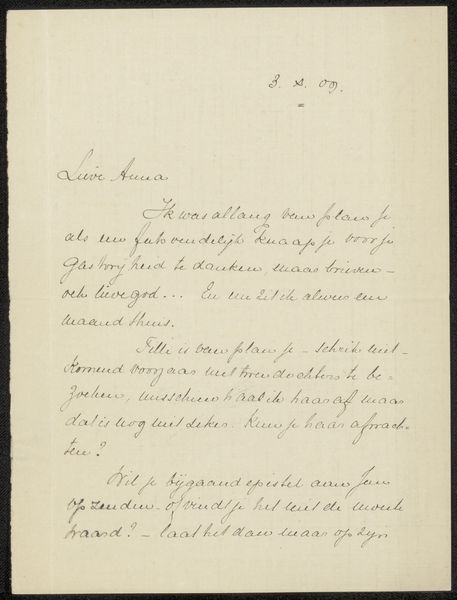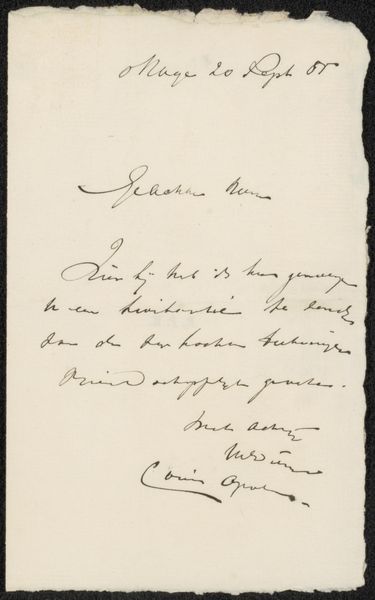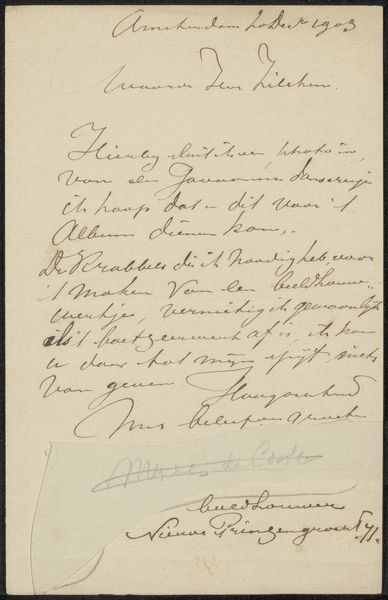
drawing, paper, ink, pen
#
drawing
#
toned paper
#
impressionism
#
pen sketch
#
hand drawn type
#
paper
#
personal sketchbook
#
ink
#
ink drawing experimentation
#
pen-ink sketch
#
ink colored
#
pen work
#
sketchbook drawing
#
pen
#
sketchbook art
#
calligraphy
Copyright: Rijks Museum: Open Domain
Editor: Here we have "Briefkaart aan Philip Zilcken," a postcard to Philip Zilcken, possibly from 1890, by Louis Couperus. It's a pen and ink drawing on paper, and what strikes me is how intimate it feels, like peering into someone's personal correspondence. What’s your take on this piece? Curator: It's interesting that you describe it as intimate. In a way, you're right; however, thinking about this piece historically, that sense of intimacy is something that has been deliberately cultivated. We need to ask how public figures like Couperus used personal communication to craft their public image. This postcard, while seemingly private, can also be seen as a performance, a carefully constructed artifact meant to be preserved and perhaps even shared. Editor: That's a compelling perspective. So, you're suggesting that even a casual note like this could be strategically crafted with an audience in mind? Curator: Precisely. Consider the recipients, likely fellow artists or intellectuals. This postcard acts as a kind of social currency, circulating within specific networks and reinforcing Couperus' position within the cultural landscape. Think about how artistic communities used personal connections to nurture each other and exert political influence. Do you think the Impressionistic style is intentional, a method to convey a natural feeling? Editor: Perhaps. The style, and the calligraphic quality of the writing gives it an immediacy, while its circulation is meant to exert a kind of artistic claim. Curator: Exactly! By placing it on display, does the museum grant or diminish Couperus's intention? Editor: This makes me consider how a gallery changes such a personal artifact, one piece in a larger web of power. Thanks. Curator: You’ve got it. Remembering the intricate dance between private expression and public persona is crucial for a historian.
Comments
No comments
Be the first to comment and join the conversation on the ultimate creative platform.
